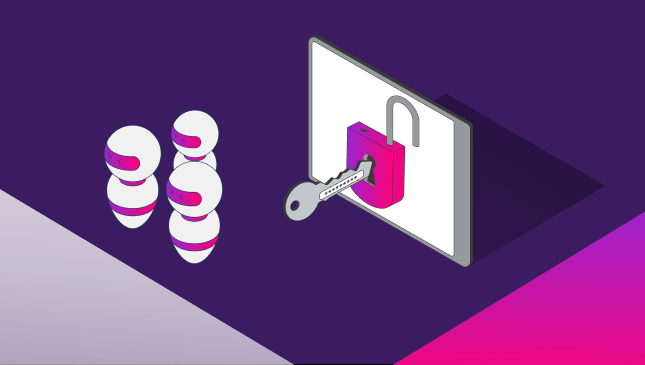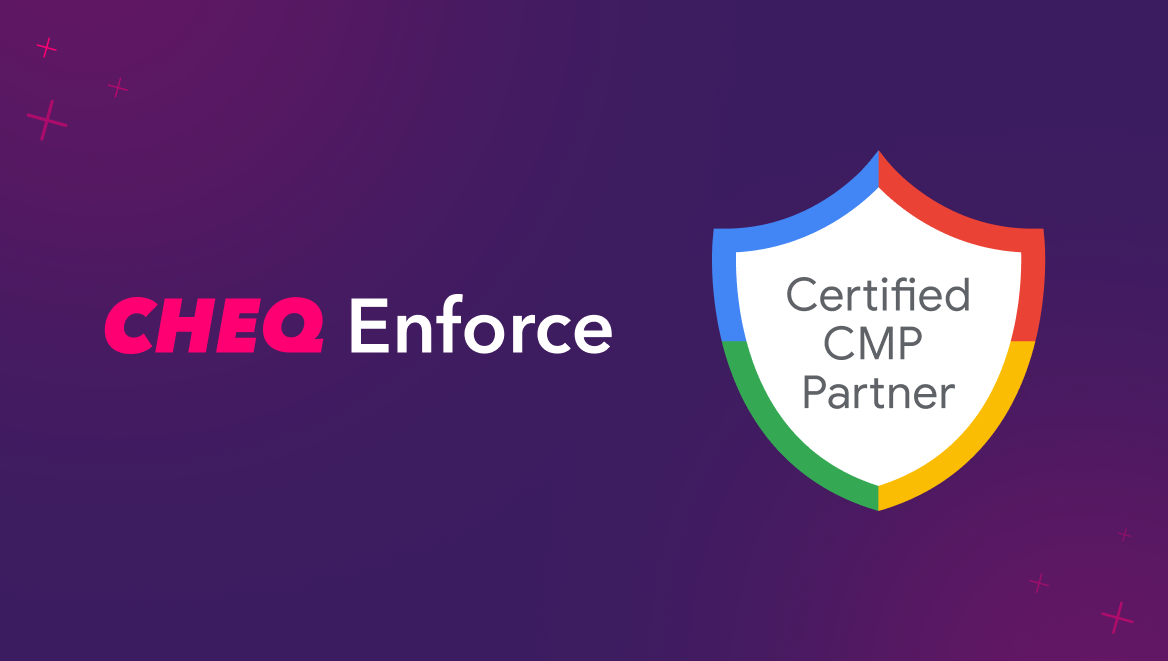Why Bot Mitigation is the Key to Winning the Battle Against Bots?
Sanja Trajcheva
|Cyber Risks & Threats | June 13, 2023

In today’s digital landscape, where technology has become an integral part of our lives, the dependency on digital platforms is ever-increasing.
This is also opening up many new topics related to cybersecurity and online safety. One such topic is the importance of bot mitigation.
With the digital expansion comes an army of fraudsters and malicious actors who seek to exploit vulnerabilities for their own gain.
These individuals usually design bad bots or automated software programs designed to perform malicious tasks. And such bots can be everywhere.
To remain safe and respond effectively to this threat, businesses must be aware of the importance of bot mitigation.
What is bot mitigation?
Bot mitigation is all about protecting a business’s online presence from the harmful actions of malicious bots. These bots are usually automated scripts or malware that aim to cause chaos on websites, apps, networks, or online platforms.
The goal of a bot mitigation strategy is to minimize the risks of such attacks. It involves identifying bot activity and differentiating it from genuine human activity. Once this is done, the next step is to filter out bad bots from good ones and block them from accessing your website.
How do bots affect your business, and why do they pose a threat?
There are various forms of bot attacks online. Fraudsters will always aim to come up with a new type of bot that can perform some ‘innovative’ fraudulent activity that couldn’t have been done before.
They usually follow what’s popular online and don’t wait too long to take advantage of what’s trending.
Let’s take, for example, the evergrowing presence of social media platforms in our daily lives. The craving for more clicks, more video views, likes, or more followers is real. This was a good motivator for some people to come up with bots that will mimic human activity on Instagram, or TikTok, for example.
And this wasn’t a complicated task to be done with the availability of the evolving bot technology they use. Now fraudsters have bots that can easily post comments online, stream a live video, or follow an account to boost its popularity.
But how does this affect your business in any way?
As a marketer or marketing agency, you must have been involved, at least once, in an influencer marketing campaign. Naturally, you’d be looking to collaborate with accounts that have a good base of followers. In return, this will bring you more engagement and traffic for your brand.
But would you like to spend your marketing budget just to see positive numbers for these metrics? Or does it matter whether it’s coming from real users that have a chance to convert into customers?
This example of spam bots merely scratches the surface of the negative consequences that bots can have on your business. There are many different activities they can perform in the digital world.
For example, some bots specialize in stealing data from your website. This can vary from completely copying the content from your entire website, stealing sensitive user information, or even stealing your intellectual property.
Other malicious bots are designed to drive a high volume of bot traffic on your website, slow it down, or cause a complete disruption.
Ad bots, or click bots, can artificially increase the clicks on your ads (yes, making you spend more money on ineffective campaigns) or other marketing activities online.
Given the wide range of activities that these malicious bots can engage in, each of them can cause distinct damage to your business.
Diminished website performance
Your website performance can be significantly slowed down by the bots that attack it with the goal of simulating a large traffic volume.
They go through your website, open pages, and raise a large number of requests to complete the task they came for. To slow your website down or, even worse, to fully shut it down for some time.
When real human visitors land on it, they will be faced with slow load time and unresponsiveness. And we know how precious everyone’s time is and how short attention span we have in this fast-paced world.
And yes, this will drive your visitors away. But it’s not just that. It also damages the site’s rankings in search engines (especially Google). Either will result in a loss of real traffic and potential sales.
Distorted analytics
When it comes to bots engaging in click fraud or ad fraud, your analytics can become extremely disordered. These malicious digital entities have the power to manipulate essential metrics. This can lead to inaccurate traffic, engagement, and conversion rate numbers, distorting your performance view.
Just imagine: you diligently track your traffic, analyze your audience, and base decisions on these insights. You go on to optimize your marketing strategy, investing time, money, and effort into reaching a challenging segment of your audience. But here’s the truth: that segment consists of bots, not real users.
You eagerly await results – conversions, increased ROI, and decreased CPC. However, they never materialize. It’s not surprising because the ‘audience’ you were optimizing for was nothing coming from bot traffic.
This is where the importance of an effective bot mitigation strategy comes in. It will save you time and resources if you identify and filter out bots’ influence before it happens.
Disrupted user experience
Bot traffic can significantly impact the user experience of your website or online platform. We’ve mentioned above that these bots aim to flood your system with automated requests and malicious activities.
This can cause significant disruptions, which can be manifested in various ways, from slow page load times to errors, unresponsiveness, and many more. All of this plays a significant role in the experience your real visitors have when interacting with your website.
They may perceive it as unreliable, causing them to question the security and legitimacy of your platform.
Such disrupted user experience surely tarnishes your brand’s reputation. Moreover, it can also erode customer trust and loyalty.
Account takeover and credential stuffing
Account takeover and credential stuffing are particularly insidious forms of bot attacks. They pose serious risks to user privacy and security, both for your users and your brand as well.
In an account takeover attack, bots employ various techniques to gain unauthorized access to user accounts. These techniques include brute-force password guessing, usage of stolen user names and passwords (credential stuffing), or exploiting security vulnerabilities.
Once a bot successfully takes control of an account, it gains the ability to carry out a range of malicious activities. They can steal sensitive information, impersonate the account holder, or engage in fraudulent transactions.
These actions can have devastating consequences for both the affected user and your business.
Financial losses
And this is the type of damage that everyone hopes not to experience in their business. Unfortunately, it can be caused as a result of any of the above-mentioned damages in one way or another. That’s why it comes last on the list.
In fact, financial losses are a significant consequence of bot attacks, encompassing a range of detrimental outcomes. From fake transactions and ad fraud to stolen data, affected performance, and escalated server expenses, these actions can exact a heavy toll.
They can result in substantial financial harm, such as diminished revenue, inflated operational costs, missed opportunities, and reputational damage to your brand. A recent study by CHEQ revealed that the fake bot activity cost businesses $142.8 billion in lost revenue in 2022 alone.
To dive deep into the numbers of fake traffic and the effects of bot activity, we recommend checking out The State of Fake Traffic.
With the above in mind, one can tell the level of damage bots, or botnets can cause to their business. It really can vary from case to case and depends on many factors. Like the nature of your business, your industry, channels you’re active on, existing cyber security efforts in your company, etc.
Developing a comprehensive bot mitigation strategy can help minimize the risks associated with bot attacks.
So, if you want to take a proactive approach in this regard, keep reading, as we’re about to discuss some practical techniques and best practices that you can employ.
Whether you choose to take the lead and develop your own measures or opt for using a software solution – I’m sure you’ll find these recommendations beneficial in developing your bot mitigation strategy.
So let’s explore them.
Bot mitigation best practices
Even though not a simple task, the bot mitigation process is not a mission impossible.
To be fair, the bot mitigation process is not a simple task. However, there are some practical measures that you can implement on your own for little to no cost.
These will help you minimize the risk of exposure to bots, increase your cyber security, and spend less once you decide to invest in a bot mitigation solution (which is undoubtedly the most effective way to ensure full protection).
Regular traffic monitoring
If you practice regular monitoring of your traffic, you can identify any unusual activity. If you detect unwanted bot traffic coming to your website or ads sooner rather than later, you can save precious time and resources.
Regular security audits and software updates
Combine these together, and you have a strong defense set-up. Audits help you identify potential weaknesses, while updates provide the necessary fixes to strengthen your system.
Backup important data
More of a plan B instead of a prevention step. Even if an attack occurs, keeping backups of important information can minimize the problems that could follow.
Use HTTPS on your website
By encrypting the data between the browser and the server, HTTPS makes it difficult for attackers to access your website.
Cybersecurity education
Investing in regular education for your teams on how to stay safe in the digital environment will pay off well in the long run.
Bot mitigation techniques
Software tools, like CHEQ, that are designed to aid in the fight against malicious bot traffic employ a combination of techniques. This way, they provide multi-layer protection against bad bots.
To understand the process better, here are some of the most common bot mitigation techniques, explained in more detail.
CAPTCHAs and Challenge-Response mechanisms
How many times have you been ‘bothered’ to solve some CAPTCHA when logging in, for example, on LinkedIn?
Yes, these forms can be annoying to us, the real users. We just want to finish what we have – login to that platform, download the e-book, complete our registration, etc.
CAPTCHAs (Completely Automated Public Turing tests to tell Computers and Humans Apart) and challenge-response mechanisms are maybe the most common techniques for bot mitigation.
They present users with tests or puzzles. These are easy for human users to solve (that’s why we can successfully login on to LinkedIn after finding the smallest piece of the traffic light in the puzzle, yay!), but guess what? It’s more challenging for bots.
These might not be the most effective ways, however. There are some known cases where hackers bypass CAPTCHAs with more advanced bots or through click farms where real people are hired to solve them.
In response to the advanced bot capabilities, the software solutions also offer more advanced forms of CAPTCHAs, which we’ll discuss in the next technique.
Behavior analysis and device fingerprinting
Behavior analysis and machine learning algorithms can easily spot anomalies and unusual user behavior.
By analyzing various factors like mouse movements, typing patterns, click sequences, and browsing behavior, these techniques can accurately distinguish between bots and genuine human activity and can help detect bots that are designed to mimic human behavior.
Furthermore, intelligent fingerprinting can help identify bots that are using fake user agents or other techniques to evade detection.
This technique involves creating a unique fingerprint for each visitor based on their device, browser, and other characteristics.
IP Blocking and Rate Limiting
IP blocking and rate limiting are essential techniques to control bot activity. By monitoring and analyzing incoming traffic, you can identify suspicious IP addresses.
There are some IP addresses known to be associated with bots or other malicious activity.
Blocking these IP addresses prevents bots from accessing your website or platform. This method is particularly effective against bots that use a limited number of IP addresses.
Additionally, rate limiting sets a cap on the number of requests a user or IP address can make within a specific time frame. This helps prevent bots from overwhelming your website with an excessive number of requests.
JavaScript Challenges
JavaScript challenges can effectively detect and block bots. This is allowed thanks to the capabilities of modern web browsers.
However, this type of bot mitigation technique can be limiting when it comes to more sophisticated bots, especially as there are some bots that run Javascript themselves.
Luckily, CHEQ, as a web security company, can overcome these limitations. Our solution knows how to identify different web engines with hundreds of different challenges.
Honeypots and honeytokens
Honeypots and honeytokens are other forms of bot mitigation mechanisms. They are decoy elements placed strategically on a website or platform to attract and deceive bots.
The purpose of a honeypot is to divert attackers’ attention from the actual system. It can also be used to monitor and analyze the behavior of attackers and gather information about their tactics and tools.
A honeytoken is a piece of data that is placed in a system to detect unauthorized access or activity. It can be used to identify and block malicious bots that are trying to access the system.
These elements appear hidden to human users but are detectable by bots. So once a bot interacts with a honeypot or honeytoken, it exposes its true nature.
Account Monitoring and Multi-Factor Authentication (MFA)
Implementing account monitoring tools and Multi-Factor Authentication (MFA) adds an extra layer of security to your application or website.
Monitoring systems can detect suspicious activity like multiple login attempts or unusual behavior and investigate it further. When the system identifies such activity, it takes action by blocking it and preventing potential harm.
Multi-factor authentication requests from users additional confirmation steps to verify their identity. It can be a prompt on their connected device, a confirmation code, extra credentials, etc.
This reduces the risk of unauthorized access, even if bots acquire login details.
Why is bot mitigation important?
Bot mitigation is absolutely crucial in today’s digital landscape. It plays a vital role when it comes to cybersecurity.
In this article, we’ve explored some of the most common forms of damage that bots can cause to any business. The consequences of these damages can have a far-reaching impact, from financial losses, decreased customer trust and loyalty, misleading data, and bad brand reputation.
When you block malicious bot traffic, you tackle these harms down. You’ll have better-performing web applications and websites, drive more real human traffic, and ultimately, increase your conversion rate and sales.
Most importantly, by proactively managing malicious bot traffic, you can ensure smooth business operations. You’ll have reliable data to make well-informed strategic choices for business growth.
With the alarming surge of malicious bot attacks skyrocketing by 112% in 2022 alone, it has become imperative, now more than ever, to act proactively.
So, take the necessary steps to stay ahead of bot threats.
How could CHEQ assist you?
CHEQ is an industry-leading bot mitigation solution for detection and protection from fake bot traffic.
It offers full protection against bot traffic for your paid or organic campaigns. You can rest assured that your ads will be engaged by genuine users only.
Under the ad fraud protection umbrella, CHEQ protects Google Ads, Facebook Ads, and Bing Ads. No fake clicks and no ad fraud; your marketing budget will be spent on real activity only.
The bot mitigation functionality is designed to protect your website from these bad bots. It can swiftly detect and prevent them from accessing any WordPress site, even outsmarting their attempts to bypass CAPTCHA forms.
The result? Your website stays fast and secure, ensuring a smooth user experience for your visitors.
Are you ready to take your bot mitigation strategy seriously?

















